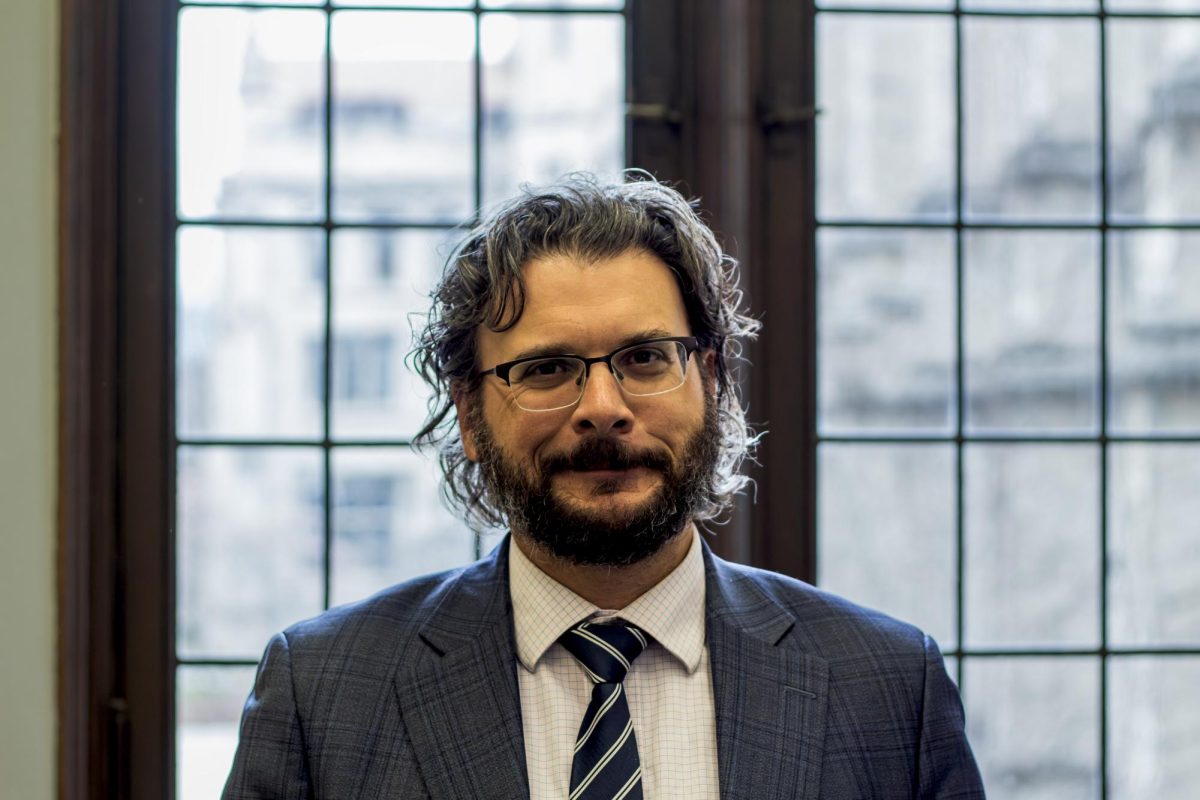U of C archaeologists working in Southeastern Turkey last summer discovered an Iron Age stele, a funereal stone, at a site in ancient Sam’al, now called Zincirli (pronounced ZIN-jeer-li). A monument to a royal official, who saw to its production prior to his death, the stone is the first evidence in the area to show a belief in the separation of the body and soul.
The stele, written on in a language similar to Aramaic, is one of many found in the Indo-European region, and dates back to roughly 900 to 600 BCE Steles, monuments to the deceased, were marked with series of pictographs representing the person who had passed away. Partially burned human remains and containers for ashes found at other sites support theories that the deceased were cremated.
What sets this stele apart is its 13-line inscription, written in the first person by the deceased prior to his death, which contains instructions to his descendants, said David Schloen, associate professor of Near Eastern Languages and Civilizations (NELC) and director of the excavations.
The stele, which reads in part, “I, Kuttamuwa…established a feast at this chamber…for my soul that is in this stele,” was found in its original location, in a small building attached to a larger home, presumably of one of Kuttamuwa’s descendants. For the archaeologists who study these objects, it adds a new dimension to the understanding of how the people of this region thought about the afterlife.
“The inscription tells us that the [Kuttamuwa’s] soul was believed to be inside the stele, belief in the transcendence of his identity,” Schloen said.
This notion is in sharp contrast to the beliefs held by Semetic contemporaries in the region, including the Israelites, who felt that the body and soul were inseparable. Other contrasting features of the stele include Kuttamuwa’s name, which is neither Semetic nor Aramaic, but Indo-European, and the presumed cremation of the man’s body.
The site of the discovery had been excavated in the 1890s, but about 80 percent of it remained unexplored, according to Schloen. While places of political importance, like temples and political buildings, had been thoroughly explored, those in the lower city, which included common dwellings, had remained largely untouched, he said.
It was to these common areas that Schloen and his main partner, Dennis Pardee, a fellow professor in the NELC department, focused on when they returned to the site in the summer of 2006, discovering many small artifacts over three consecutive seasons of digging. However, the stele of Kuttamuwa, discovered this past July, is the site’s most unusual item.
Kuttamuwa himself was of a Neo-Hittite culture that rose after the collapse of the Hittite Empire around 1100 BCE The site where the stele was found was part of an Aramean kingdom, close to the Tauras mountains of southern Turkey.
Exposed to both northern Indo-European practices, and southern Semetic ones the people of ancient Sam’al adopted aspects of both.
“What we see here at our site is an amalgamation of an Anatolian Indo-European culture with an Aramaic Semitic culture,” Schloen said.
This amalgamation resulted in cultural innovations like Kuttamuwa’s unique death ceremony. After his body was cremated, and his soul was believed to enter the stele it would remain in the care of Kuttamuwa’s relatives.
“They would actually pour wine on top of the stele,” Schloen said.
A picture of Kuttamuwa depicted on the front of the tablet shows him at a table of food, lifting up a cup: his family may have believed they were filling this cup as they poured him wine.
Other artifacts found around the stele support the writings found on it. Objects like fragments of bowls and plates, as well as animal remains, were scattered around the site, indicating that Kuttamuwa’s family regularly provided food for his soul to consume.
Although the custom of feeding the deceased was fairly widespread in the Iron Age as well as the preceding Bronze Age, said Schloen, offerings were usually made to the body of an individual.
The stele is now in Turkey, in the Gaziantep museum. Researchers in NELC and at the Oriental Institute will continue to study it, both working with the actual stone as well as from a series of pictures and drawings made of it. Work also continues at the Sam’al dig.









